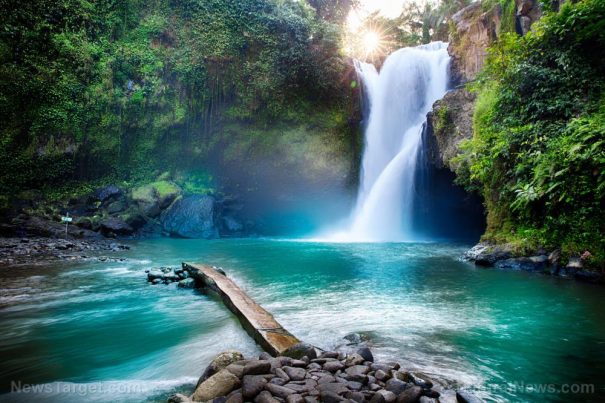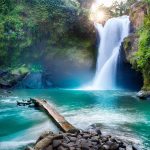
Rivers can create waterfalls by themselves
Friday, November 29, 2019 by Edsel Cook
http://www.naturalnewsresearch.com/2019-11-29-rivers-can-create-waterfalls-by-themselves.html

Some waterfalls didn’t need any help from an earthquake or a similarly powerful event to be born. They achieved their form after thousands of years of abrading the rocks that made up their riverbeds.
A waterfall grabs the attention of anyone in its general vicinity. It marks the speed at which the landscape changes thanks to the flowing water that cuts through the bedrock.
Sometimes, the rising or falling sea levels lead to the birth of a waterfall. Other times, the movement of tectonic plates raises large chunks of land that contain rivers, and the water spills over the edge of the elevated ground.
Waterfalls slow down river incision, the erosion caused by a river or stream that ended up below its usual level due to tectonic uplift. They serve as a barrier for downstream perturbations like summer thunderstorms and floods that disturb the usual flow and amounts of water.
Most experts believed that waterfalls needed intervention from an external force. The tremendous energies of an earthquake, a landslide, or a sudden change in the sea level were considered necessary to create the edgy rock formations. (Related: Researchers discover that rock distribution on riverbeds has more to do with the river’s shape than water flow.)
Modeling the actions of a river that may spontaneously form a waterfall
Researchers from the California Institute of Technology (CalTech) proposed that outside factors were not necessary to form a waterfall. Instead, the random behavior of a typical river might be enough to shape the rock layers beneath it.
Given enough time, a river would mold its landscape in such a way that a waterfall might appear within its length. And no earthshaking events are required.
For their experiment, the researchers set up a small model of a river in their laboratory. They used polyurethane foam as the substitute material for the natural bedrock that hosted rivers and waterfalls.
Polyurethane foam may be adjusted to match the characteristics of natural rocks. The plastic material erodes much faster than the real thing, allowing researchers to model hundreds or thousands of years of rock erosion and incision within hours or minutes.
The researchers positioned the polyurethane foam in a flume. They set the bedrock substitute to tilt 20 degrees down.
Next, they allowed the model river to go down the flume. The water contained sediment to simulate the contents of a stream or river in real life.
Some rivers may have created their waterfalls on their own
The CalTech experiment showed that the substitute bedrock experienced unequal levels of erosion from flowing water and its sedimentary content. Eventually, the straight channel took on the wavy shape found in many natural rivers.
Segments of the bedrock held firm against erosion and ended up as shallow crests. Other sections broke down much quicker and turned into steep pockets.
The different levels of abrasion across the bedrock produced what experts might recognize as the steps found in a waterfall. Two hours later, the researchers observed that water began flowing over the crests and pouring down the pockets.
The artificial waterfalls lasted for 20 minutes before the water finally wore down the sturdier crests. Their real-life equivalents were estimated to take up anywhere from 10 to 10,000 years of the lifespan of a natural river.
Those numbers might seem very large for short-lived humans. But they counted as spontaneous for rivers.
Based on the results of their experiment, the CalTech researchers concluded that natural waterfalls sometimes form spontaneously. They plan to come up with a way to determine if a real-life waterfall needed help to form itself or if it sprung from the river on its own.
Sources include:
Tagged Under: Tags: bodies of water, Ecology, environment, goodscience, landscape formation, real science, research, river formation, rivers, waterfall





